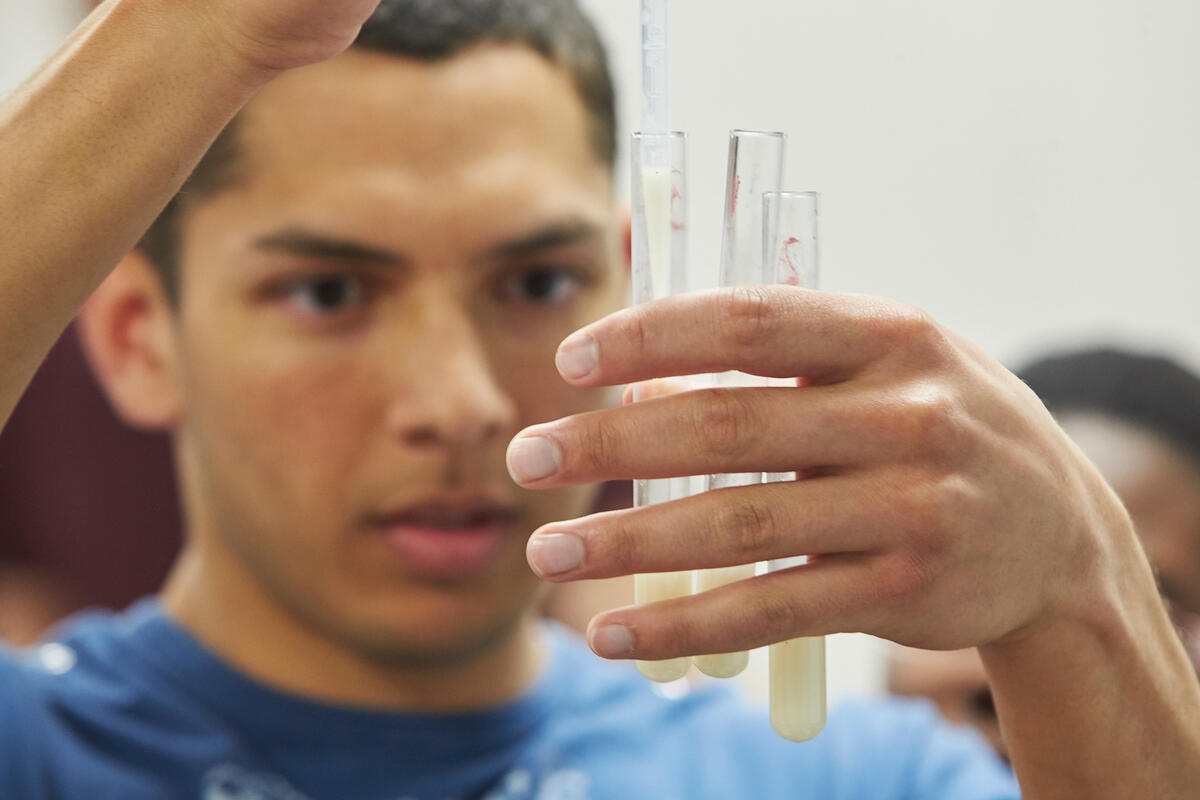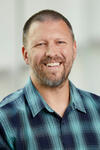
College of Sciences News
The School of Life Sciences offers programs that meet the needs of students intending to enter the workforce or pursue advanced training in the sciences, medicine, and other professional and technical fields. We provide a well-rounded foundation in natural, physical, and mathematical sciences that can set students up for successful careers and professional programs.
Current Sciences News

President Chris Heavey recognizes 10 students for their staunch commitment to academic excellence and service to the community.

UNLV geochemist Libby Hausrath – a member of NASA's Mars Sample Return Team – and colleagues share stunning new research in the latest issue of the journal Science.

From hosting science field trips to delivering therapy services to rural areas, UNLV enriches the lives of Nevadans.

A collection of colorful headlines featuring UNLV staff and students.

The assistant director of the Sciences Advising Center wants everyone to know: There's so much more to being an advisor than telling students what classes to take.

The first Neuroscience Research Showcase brings together experts across disciplines to share their work and spark new collaborations.
Sciences In The News
Another summer, another Lake Mead update: And this year, it's not looking great. Our snowpack gains this winter were pretty dismal, and the National Weather Service recently even lowered their projections for Lake Powell, whose upstream levels affect Lake Mead's. In light of all this, we're bringing back a conversation that co-host Dayvid Figler had with UNLV hydrology professor David Kreamer. The creation of Lake Mead was not without its costs — so was it worth it? And what happens if we use Lake Mead up?

Mars, one of our closest planetary neighbors, has fascinated people for hundreds of years, partly because it is so similar to Earth. It is about the same size, contains similar rocks and minerals, and is not too much farther out from the Sun.

A UNLV-led study has discovered a new molecular path that leads to autism, potentially opening the way for more intervention in the future.

Researchers at the University of Nevada, Las Vegas, have made a significant breakthrough in autism research. The UNLV researchers uncovered a connection to a type of neuromuscular disease called myotonic dystrophy.

A recent discovery of a molecular connection between autism and myotonic dystrophy, a type of neuromuscular disease, may provide a breakthrough on how clinicians approach autism spectrum disorder. The new study by an interdisciplinary team of biomedical scientists, published on April 21 in Nature Neuroscience, used myotonic dystrophy as a tool or model to learn more about autism – effectively using one disorder to better understand the other.

A recent discovery of a molecular connection between autism and myotonic dystrophy, a type of neuromuscular disease, may provide a breakthrough on how clinicians approach autism spectrum disorder. The new study by an interdisciplinary team of biomedical scientists, published on April 21 in Nature Neuroscience, used myotonic dystrophy as a tool or model to learn more about autism – effectively using one disorder to better understand the other.
Sciences Experts





